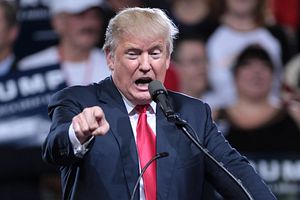WASHINGTON, D.C. – On Monday, U.S. President Donald Trump inked an executive order withdrawing the United States from the Trans-Pacific Partnership (TPP). Though the move itself was expected, its significance and implications need to be properly understood amid the hype that has followed.
Trump’s withdrawal from TPP was far from surprising. His opposition to the TPP, a 12-member free trade agreement whose members comprise around 40 percent of global GDP, has been longstanding, which made it difficult to believe that he would reverse or moderate his position as he has done on some other fronts (See: “What Will Trump’s Asia Policy Look Like?”). Besides, as I indicated previously, Trump had said that TPP withdrawal would be among one of the first executive actions he would take upon taking office on January 20.
What happens next is far from clear. As I indicated previously, one major thing to watch will be whether existing signatories can initially move forward with TPP without the United States, with Washington potentially coming on board at a later time, something that would not be unprecedented for U.S. policy (See: “How TPP Can Survive Trump”). Following Washington’s withdrawal, major TPP countries like Australia, Singapore, and Malaysia have already publicly indicated that they will consider other options before proceeding.
TPP withdrawal is unquestionably a major blow to the United States both economically and strategically. Economically, Washington is in effect losing out not just on the potential gains it would get from any free trade agreement, but also a valuable opportunity to write the rules of 21st century trade in the world’s most dynamic and prosperous region, including in areas where it would break new ground like state-owned enterprises and the digital economy.
Strategically, the move will reinforce doubts about U.S. credibility in the region amid a rising China, further sour the narrative on Obama’s pivot or rebalance to the Asia-Pacific, and undercut Washington’s efforts to strengthen the capabilities of its Asian allies and partners who would benefit from the diversification and domestic reforms that TPP would offer.
Whether or not a blow for Washington will be a boon for Beijing, however, is less clear than some commentators have been suggesting. The alarmist narrative suggests a United States that has ceded its traditional position as free trade champion to China, with Xi Jinping making his first-ever attendance at the World Economic Forum in Davos earlier this month and Beijing eager to make inroads on the Regional Comprehensive Economic Partnership (RCEP) with other Asian states.
But though the optics do not look good, that should not be conflated with substance. RCEP, as I have pointed out before, is not a Chinese-led initiative, but an ASEAN-led one than includes not just China, but also five other countries that currently have FTAs with the regional grouping (also India, Australia, Japan, South Korea, and New Zealand) (See: “Beware the Myth of Warring US-China Trade Pacts”). The United States is excluded from RCEP – an agreement with much, much lower standards than the TPP – not because of some Chinese-led plot or Washington-related deficiency, but because the standards Washington would require for such a pact would be too high.
So, while TPP’s demise does mean that the United States loses an opportunity to raise standards closer to where it wants them, RCEP’s eventual conclusion is neither a big U.S. loss nor a large China win, as some are portraying it to be.
TPP withdrawal is also far from the ideal start for the Trump administration’s Asia policy. As seasoned observers had repeatedly told members of the Trump team before they took office, even though TPP withdrawal was expected at some point during the administration, announcing it so early on without a clear movement toward alternatives would send a poor signal to the region at the outset. Projecting this protectionist bent could also set up the administration for a tough road ahead in terms of negotiating the string of bilateral deals it says is just around the corner.
The Trump administration, however, continues to insist that bilateral free trade agreements are on the way. There are certainly opportunities for working out some deals, whether it be with Britain post-Brexit, with Prime Minister Theresa May set to visit later this week, or with Japanese Prime Minister Shinzo Abe, with whom Trump will meet soon. That said, bilateral pacts with these countries, let alone with TPP members like Vietnam and Malaysia, will not be easy. If the Trump administration’s protectionism were to be imitated or reciprocated by potential trade partners, that will make negotiating all the more difficult.
While these bilateral agreements would constitute wins of their own if concluded, it is important to stress that they would still not have the “open architecture” trait that TPP did, which would allow Washington to attract new members over time and generate a race to the top. The United States would thus gain in terms of its narrow economic interests, but it would not be able to reshape the rules of the game.
Of course, things could change further down the line, whether under this administration or a successive one. The George W. Bush administration, for instance, began by pursuing bilateral deals with key Asian countries like Singapore and South Korea (and less successfully with others like Malaysia) but eventually warmed to the TPP. Trump’s hardline stance on free trade and the firm “bilateral-multilateral” divide the administration has portrayed thus far suggest that there is much less room for flexibility this time around. But it wouldn’t be the first time that Trump pulled off the unpredictable.
































